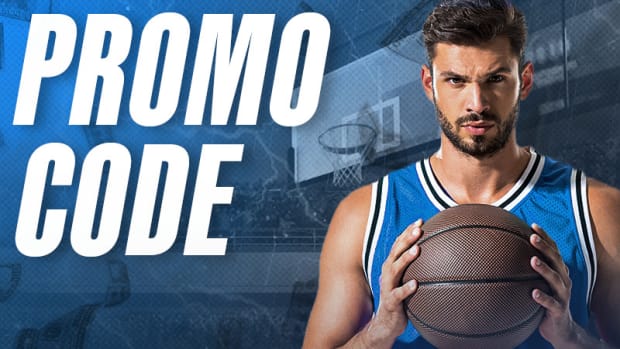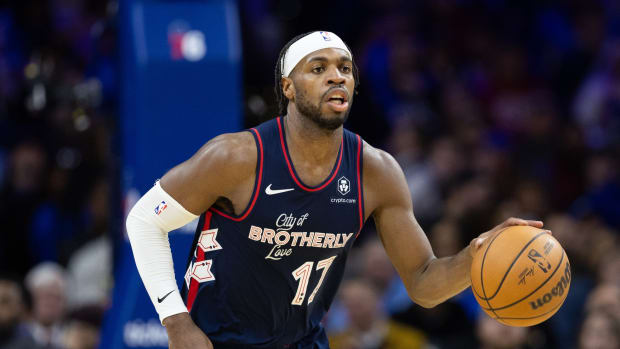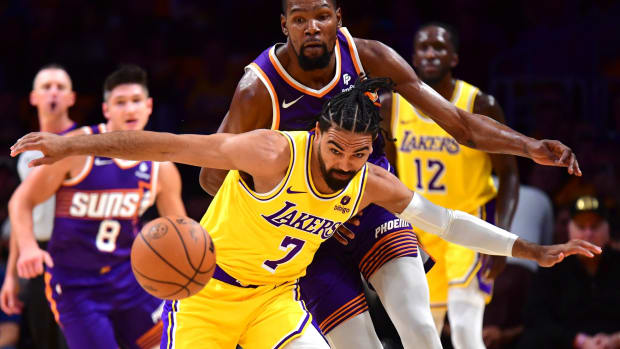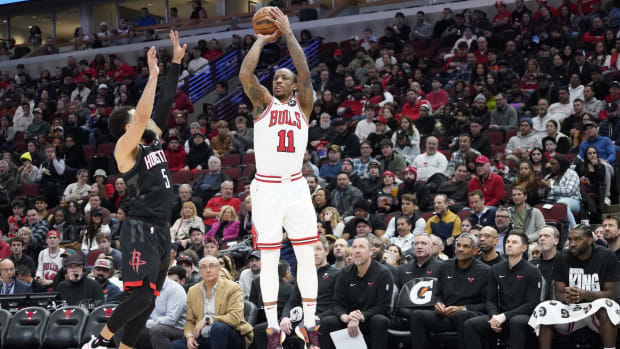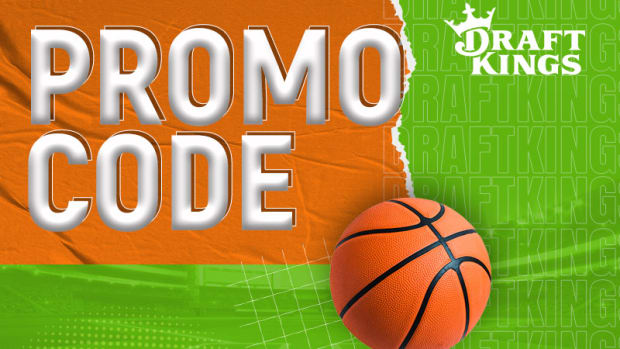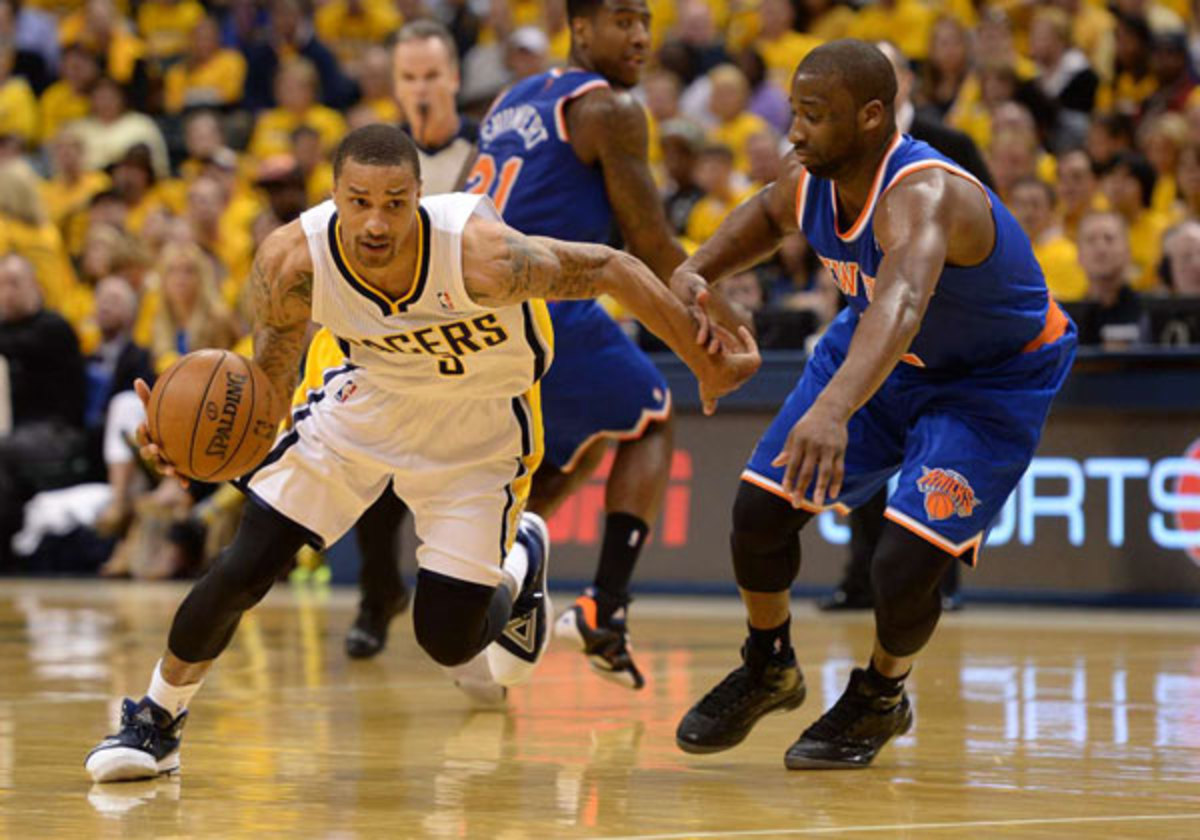
Three questions to preface Game 6 between the Pacers and Knicks
The Pacers are scoring 12 fewer points per 100 possessions with George Hill off the floor. (David E. Klutho/SI)
On Saturday night, Indiana will have its second straight opportunity -- after taking a 3-1 lead -- to close out its series against New York and advance to the Eastern Conference finals. Yet this particular series has taken some interesting turns of late, which may afford the Knicks the chance to force a Game 7 and a chance to extend their postseason run. In anticipation of that affair, here are but a few of the factors in play to determine the fate of this series:
• Can Indiana's offense adjust without George Hill?
It appears increasingly unlikely Hill will be available for Game 6 on Saturday, as Hill, Pacers team doctors and NBA medical officials proceed with the league's recently installed -- and wholly warranted -- concussion protocols. This is not an injury from which Hill can rush back if he's willing to accept the risk. The rules in place are designed to protect mental health and, as Jared Wade put it in a terrific post on the subject for Eight Points, Nine Seconds, "to protect the players from themselves." Unfortunate though it may be that Hill suffered an injury just as the Pacers were in position to close out the series, it is a certain positive that all parties involved seem to be mindful of what's at stake in this instance. Hill is no doubt anxious and the Pacers are quite visibly desperate. But no one involved is really in a position to go through the motions on the NBA's post-concussion testing regimen. Nor justified in rushing the process with a man's mental health at risk. If you're of the opinion it's just a concussion, I'd encourage you to wade a little deeper into the expansive base of writing on the subject in recent years, perhaps beginning with Henry Abbott and Beckley Mason's missive on the subject for TrueHoop, which more specifically relates head trauma to NBA basketball.
Unfortunately for the Pacers, Hill's absence puts them in a difficult tactical position. Hill may not be All-NBA caliber in coverage, but he's a sound, underrated defender who allows Indiana to play more one-on-one. D.J. Augustin -- Hill's replacement -- is not and does not. He's undersized, easily taken out of plays by even the most meager screens, incapable of handling potential switches, and often makes mistakes in guarding the pick and roll. His weaknesses on that end are many and strain the Pacers' entire system as a result -- pulling Roy Hibbert into the fray (and into fouls) more often and dragging other help defenders out of position.
Things don't look much better for the Pacers on the offensive end, where they've scored 12 fewer points per 100 possessions with Hill on the bench in the postseason relative to when he plays. When Hill is on the floor, Indiana has enough ball-handling, passing and shooting to initiate its offense consistently. They still get stalled on the perimeter from time to time, but Hill is a far smoother entry option than many of his Pacers teammates, not to mention a far more viable scorer. Removing him from their operations forces Augustin and Paul George to create against ball pressure, while Lance Stephenson is thrust into an uncomfortable role as a more prevalent ball-handler. There aren't any simple solutions to make the Pacers a better team without so critical a piece, but Frank Vogel will need to find ways to make the offense flow and the defense execute while Hill is sidelined.
• Can the Knicks continue to apply the right kinds of defensive pressure?
The Pacers are a vulnerable team at the present, but only if the Knicks go about defending them in the right ways. The early part of this series saw New York scrambling its way through a series of poorly thought-out (and even more poorly executed) double teams, which Indiana easily turned to create open shots from the perimeter. If the Knicks' coverage in any way resembles that early-series model in Game 6, they may well miss out on an invaluable opportunity to extend the series and their season. Yet, if they double-down on their solid one-on-one defense from Game 5 (as supported by sporadic and quick double teams in the post), this Knicks team may well put itself in a position to come back from a seemingly damning 1-3 disadvantage.
We have no way of knowing what to expect from a team so unreliable, particularly on defense. New York has guarded well in spots this postseason, but has deviated from its course and botched its approach frequently enough to invite plenty of doubt. The capability is there, but the possibility of the Knicks stymieing the Pacers' offense seems just as likely as that of their poor decision-making and sloppy play bringing about the end of this series.
• Will Mike Woodson be able to use Chris Copeland for so many minutes -- and to such great effect -- in Game 6?
New York has struggled scoring throughout much of this series, making Mike Woodson's reluctance to play some of his more useful offensive players (Chris Copeland and Steve Novak) all the more curious. Both of those players bring their own defensive concessions, but would open up the floor through shooting ability alone against a Pacers' defense that excels in eating up space on the interior. Woodson finally relented in playing Copeland for almost 20 minutes in Game 5, a tweak that paid off handsomely. By carefully managing Copeland's defensive matchups, the Knicks were able to make the most of his 13 points and 3-of-4 shooting from beyond the arc. Helpful in that effort was Roy Hibbert's foul trouble. Some of the same plays that led to Indiana stops earlier in the series were in Game 5 called as fouls on Hibbert, which created a significant problem when coupled with the gaps in the Pacers' perimeter defense.
When Hibbert exited the game, Woodson could play Copeland without penalty. Ian Mahinmi and Tyler Hansbrough are both mild enough threats to hide Copeland on them defensively and in the process open up the flow of the Knicks' offense through his ability to spread the floor. It was an overdue attempt to capture a relative simple solution, but one that worked incredibly well in bolstering New York's scoring efforts.
Woodson will undoubtedly look to use Copeland in a similar role in Game 6, but a few factors could stand in his way. The first is officiating. If Hibbert isn't given the same quick whistles (and thus held to a mere 31 minutes of playing time -- his lowest total of the series), the opportunities to play Copeland could prove either fewer or more costly. Copeland may be able to get by trying to box out Mahinmi and keep up with Hansbrough, but Hibbert and/or David West would present too imposing a problem for the Knicks to welcome. The other variable is Woodson's foil on the opposite bench, Pacers head coach Frank Vogel. He's a smart tactician with a knack for making prudent adjustments. I'd be surprised if Indiana shows up without some specific way to attack Copeland regardless of which player he's assigned to guard.
Statistical support for this post provided by NBA.com.































